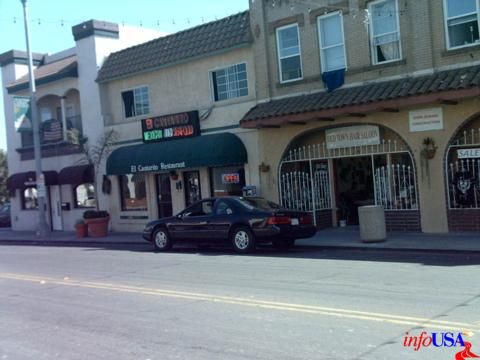
Old TownPlacentia. (Photo: Pinterest)
Placentia’s Independent Fire Department Saves Millions and Improves Service
Why aren’t grand ‘reset’ plans being extended to rules and procedures that govern the public sector?
By Edward Ring, November 18, 2020 6:24 am
On July 1, 2020, the City of Placentia formally terminated its contract with the Orange County Fire Authority, where the average operations employee in 2018 collected pay and benefits in excess of $241,000. Seeking to create a new model that reduced these unaffordable levels of pay and benefits, as well as made more efficient use of personnel, and despite bitter opposition from the firefighters union, the City Council spent the year prior to July 2020 designing and building an independent fire department.
With over three months of operations now behind them, it is possible to review early results of Placentia’s experiment. According to the city’s “final quarterly update” on Placentia’s Fire and EMS Services, released on October 20th, in their first three months of operation, the new independent fire department serviced 40 percent more daily calls than the prior year with OCFA, reduced local response times by over 3 minutes when compared to OCFA, and reduced the need for mutual aid from neighboring cities by 85 percent.
One of the ways Placentia accomplished this was by using ambulances and paramedic squad units to respond to medical emergencies instead of 55,000 pound fire trucks. To further reduce response times, the city also invested in emergency vehicle traffic signal preemption devices through major intersections. To reduce costs, in addition to relying on ambulances for strictly medical calls, the city contracted with part-time firefighters and fully trained reserve volunteers instead of paying overtime to fill absences and vacancies. The city also replaced the firefighters CalPERS pensions with a 401K plan.
In response, neighboring agencies in Orange County have resisted Placentia’s innovations by not signing automatic mutual aid agreements, an arrangement that is the standard method whereby fire departments with adjacent jurisdictions assist each other. Not only does this allow more firefighting resources to be quickly applied to fires too big for one small department to handle, but more commonly it is the way that the nearest station responds to emergencies regardless of jurisdictional boundaries.
A troubling complication relating to these automatic mutual aid agreements is that even in the case of Fullerton, which did eventually enter into an agreement with Placentia, Fullerton’s fire department is not making full use of the agreement. Reached for comment via email, Placentia’s city manager, Damien Arrula, offered considerable detail on this situation. The next four paragraphs constitute his lengthy response, which merits publishing in its entirety:
“While we have successfully entered into an auto/mutual aid agreement with Fullerton, it doesn’t appear that that agreement is being utilized by the Fullerton Fire Department to its fullest intent. In other words, Placentia’s Fire Department is not being called to assist the residents of Fullerton when we are clearly identified as being closer and available to assist or wherein there’s a need for extra support. In the spirit of the modern fire service, which is known as ‘calls without borders,’ we are supposed to assist residents with the closest available unit with the fastest available response time, regardless of whether they are in Fullerton, Brea, Yorba Linda or Anaheim. This is the system being used throughout Orange County and the nation, and yet it’s not being used locally, to the detriment of the public we took an oath to protect.
What makes this more egregious is that several Chiefs have referred to Placentia as a ‘black hole’ from an operational standpoint. Which translates to ‘don’t call Placentia unless you absolutely have to because we (and our fire unions) don’t like their model.’ This is disturbing behavior from a Command Officer or anyone that is in the business of the fire service.
In OCFA’s case, although their model relies heavily upon auto/mutual aid, OCFA has outright refused to contact Placentia Fire for auto/mutual aid calls. And when they have, they have cancelled those calls very quickly, meaning Placentia never goes into Yorba Linda to assist any more. This is despite the fact that our station on Valencia provided 85% all mutual aid calls between Placentia and Yorba Linda just one year ago to assist Yorba Linda residents. What this translates to is OCFA instead calling Anaheim, Brea and Fullerton for auto/mutual aid, which causes them to leave their cities exposed while they traverse Code 3 all the way through Placentia enroute to a call in Yorba Linda.
This ultimately and undoubtedly has resulted in longer response times by several minutes for the residents of Yorba Linda from just one year ago, all simply because of their refusal to contact us for assistance, nor the other agencies demanding of OCFA to use the system as was intended. When lack of oxygen to the brain for more than four minutes occurs, this can result in brain damage. So when we say minutes count, they do and when anyone, regardless of title, rank or authority plays games with people’s lives, they should be held accountable for such actions or reevaluate the oaths that they took as first responders in protecting people.”
Elected officials in neighboring cities should carefully consider what’s happened in Placentia. According to evidence gathered so far, they have saved money, they have improved service, and in response, neighboring fire departments have incurred increased costs and endangered lives as a consequence of their resistance to Placentia’s innovations. Given these successes, elected officials not only near Placentia but throughout California should carefully consider what’s happened in Placentia.
In evaluating how Placentia’s model might be emulated in other cities and counties in California, local elected officials should recognize there are two very distinct avenues of innovation. One involves exchanging defined benefit pensions for 401K plans, which is a significant source of savings. When Placentia took their firefighters out of CalPERS, the union controlled state legislature responded by passing AB 2967, which forbids agencies from exempting employees from CalPERS contracts. But that law does not take effect until January 2021, and it may be possible that CalPERS client agencies can preserve their rights to opt out of CalPERS in the future if, before December 31, 2020, they submit a notice to CalPERS that they intend at some point in the future to provide services using new classes of city employees.
The significance of this should not be understated, because it isn’t just fire departments that could be affected. The CalPERS system, along with most of California’s state and local government employee pension plans, continues to increase its required annual contributions from employers. But if these employers preserve their right to eventually reclassify city employees out of the CalPERS system, from firefighters to sanitation workers, there is a chance they could avoid being financially swamped in the future. On the other hand, statewide, systemic reforms to California’s public employee pensions is still a possibility. But meanwhile, local governments should have their attorneys investigate the fine print in AB 2967. Simply sending a letter to CalPERS by 12/31 might save millions in the future.
Regardless of whether or not cities and counties can get their pension costs under control, however, they must recognize the many additional innovations that saved money while improving the quality of service for Placentia’s new fire department. In a three part report published by the California Policy Center earlier this year (part one, part two, part three), Placentia’s many operational changes are described in more detail. To summarize two of the highlights, by using a contract ambulance service and by getting overtime costs under control with part-time and volunteer firefighters, Placentia has logged savings comparable to those savings realized by opting out of CalPERS.
In this time when government officials and vocal activists continually remind us all of the opportunity that the COVID-19 pandemic offers for a complete societal “reset,” it is interesting to wonder why such grand reset plans aren’t being extended to the rules and procedures and operational models that govern the public sector.
California’s firefighters, along with all public servants in California, are urged to look at innovations such as what Placentia has done, and recognize that these paradigm shifts are being attempted in the interests of all of California’s citizens, during difficult times. They should use their considerable political clout to offer mutual aid in support of this process.
- Ringside: Quantifying California’s Brave EV Future - July 25, 2024
- Ringside: California’s Water Economy – The Three Biggest Choices - July 18, 2024
- Ringside: An Overview of California’s Water Economy - July 13, 2024





This is great. An example of an independent fire department model that works and could be copied by all. Not only puts a dent in the sickening waste of money one typically sees but increases efficiency, response times, and all the rest of it. If only such a model WOULD be copied by all.
My still in his 40’s brother-in-law is a fire captain and makes the following here in SoCal:
Regular pay $92K – Overtime pay $69K – Other pay $90K – Benefits $95K
Total pay & benefits $347K and that does not include pension benefits
There are 7,669 fire captains in Cali according to Transparent California so it really adds up
MOST firefighters retire as a “captain.” What do they captain? A three or four man fire truck.
A police or military captain have far, FAR more responsibility than these firefighters.
In the army or the marines, the man in charge of a four man tank would be a corporal or lowly sergeant.
An army/marine captain can command a 120 soldier combat company. A navy captain can command a 5,000 sailor aircraft carrier — loaded with nuclear weapons.
MOST retire as a captain? Not sure where you’re getting this statistic, but it’s not true at all.
Richard, we never said that a captain in the Fire Department is equivalent to a captain in the Police, Army, or Navy. If you would do more research, you will see that a Fire Department has a rank structure very similar to those other agencies. Typically, a “Fire Chief” is in charge of an entire Fire Department. Below him are several rank structures of chiefs (ie: Chief Deputies, Deputy Chiefs, Assistant Chiefs, and Battalion Chiefs), depending on how big the department is. These chiefs are not at every station. However, within most fire stations are at least one captain (who is in charge of the fire station), engineer (who drives the fire engine), and firefighters and/or paramedics. Some stations have lieutenants as well, depending on the department. We call the person who sits in the passenger’s seat of the fire engine (or fire truck, or Haz-Mat squad, etc) the “captain”. He is in charge or that apparatus, just as a navy captain is in charge of his apparatus. Therefore, the term “captain” does not mean the same thing across the board, and it’s use definitely matters depending on which career you’re talking about.
The title is Captain, but it is more in line with a police sgt. Depending on the fire station and the emergency they can supervise three to 16 individuals, or up to 5 to 7 other fire companies at an emergency. The a Fire Captain is more like a lead/supervisor. Still considered labor, not management. Most firefighters don’t retire as a Captain, but many do. Many stay driver/operator, or Firefighter/Paramedic. Just to help you know, I am a firefighter, and I do agree the budgets are way over blown. I also believe you need a well paid and full staffed FD if you want to save lives. You can have a FD that stops the fire in the room it starts in or the building or the block. You as a citizen can vote for that.
California firefighter unions LITERALLY would rather you die and your home burn down than use nonunion assistance. I’ve seen this in San Diego.
If you want to know more about alternatives to labor union monopolies, read my five-part LA TIMES debate with an academic labor union apologist (we both were paid for the debate). It’s still germane years later.
https://riderrants.blogspot.com/2013/10/ten-years-after-disastrous-san-diego.html
In addition, check out my research article on a very success volunteer fire department — very common in most states in America. I’m not proposing volunteer departments for our urban areas, but it’s a fascinating contrast with your incredibly expensive union firefighter compensation levels. Volunteer firefighters are America’s TRUE firefighting heroes.
https://riderrants.blogspot.com/2015/06/where-to-find-our-real-firefighting.html
This are only 3-months statistics. Statistics can be manipulated to any way they see fit. I guarantee they did not save 3 minutes on average response time. Why? They did not build any additional fire stations, and they do not have a better dispatch center.
It is a revolving door, and will continue to be a revolving-door Fire Department. Most people will move one to bigger and better opportunities in career Fire Departments. They won’t stay long in Placentia. Placentia will continue to have to come up with money to retrain new firefighters. One of their captains who was a Cal-Fire career FF worked one year and retired. BC is an ex OCFA Captain that couldn’t pass the OCFA test.
Regular everyday traffic collision gets a battalion chief so they can run the scene. This is 100% about saving money. They do not care about their citizens. Only department in the city that is not Cal-PERS.
Other surrounding career fire departments (ie: Fullerton, Brea, Orange County, Anaheim) will not provide automatic aid service, as that is reserved for like-for-like resources. Placentia Fire is not like-for-like.
The city of Hawaiian Gardens broke off from LA County Sheriff nearly 20 years ago, as they thought they could save money. Maybe they did at first, but soon came dragging their tail back to LA County Sheriff in a few years.
Also, my fireman’s friend work for Lynch Ambulance, who is the medical aid provider for the city. He said it is absolutely MISERABLE to work there. The two ambulances they staff post outside the two stations, and make peanuts. The fire crews provide no assistance whatsoever on medical calls, especially on calls such as cardiac arrests where extra help is needed to save a life. How much retention do you think the people that work there will have? They’ll move on as soon as they can. Guaranteed.